Quad Intel Xeon Platinum 8260 Benchmarks
For this exercise, we are using our legacy Linux-Bench scripts which help us see cross-platform “least common denominator” results we have been using for years as well as several results from our updated Linux-Bench2 scripts. Starting with our 2nd Generation Intel Xeon Scalable benchmarks, we are adding a number of our workload testing features to the mix as the next evolution of our platform.
At this point, our benchmarking sessions take days to run and we are generating well over a thousand data points. We are also running workloads for software companies that want to see how their software works on the latest hardware. As a result, this is a small sample of the data we are collecting and can share publicly. Our position is always that we are happy to provide some free data but we also have services to let companies run their own workloads in our lab, such as with our DemoEval service. What we do provide is an extremely controlled environment where we know every step is exactly the same and each run is done in a real-world data center, not a test bench.
We are going to show off a few results, and highlight a number of interesting data points in this article.
Python Linux 4.4.2 Kernel Compile Benchmark
This is one of the most requested benchmarks for STH over the past few years. The task was simple, we have a standard configuration file, the Linux 4.4.2 kernel from kernel.org, and make the standard auto-generated configuration utilizing every thread in the system. We are expressing results in terms of compiles per hour to make the results easier to read:
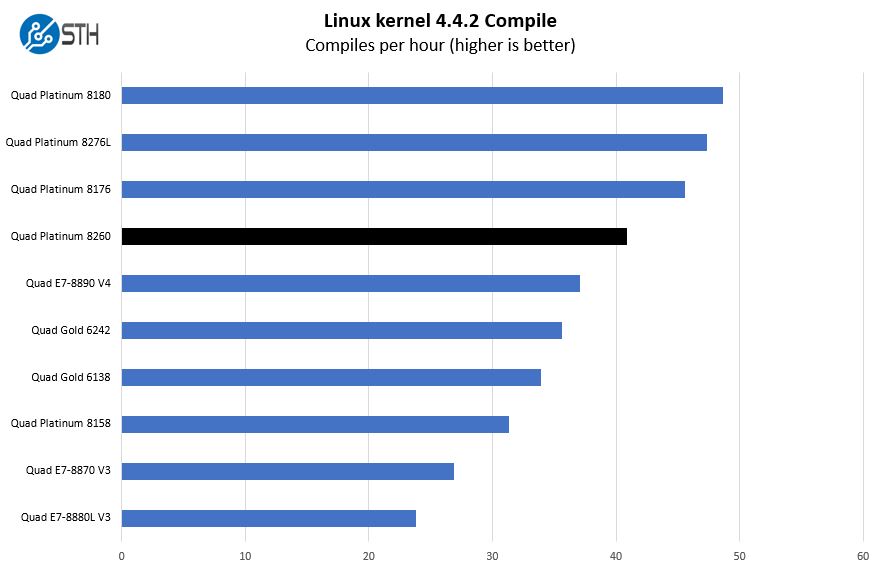
One of the interesting takeaways we have here is that the quad Intel Xeon Platinum 8260 setup outperforms our quad Intel Xeon E7-8890 V4 setup. While the Intel Xeon E7-8890 V4 was a top-end SKU, the Intel Xeon Platinum 8260 is a few steps down from that top bin in this generation.
c-ray 1.1 Performance
We have been using c-ray for our performance testing for years now. It is a ray tracing benchmark that is extremely popular to show differences in processors under multi-threaded workloads. We are going to use our 8K results which work well at this end of the performance spectrum.
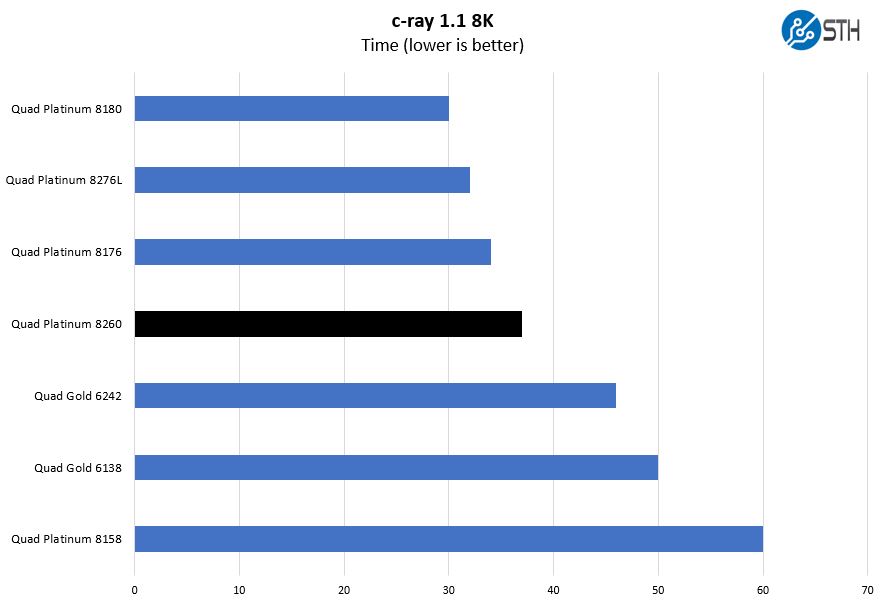
Here we see the performance that is just shy as the previous generation quad Intel Xeon Platinum 8176 results.
7-zip Compression Performance
7-zip is a widely used compression/ decompression program that works cross-platform. We started using the program during our early days with Windows testing. It is now part of Linux-Bench.
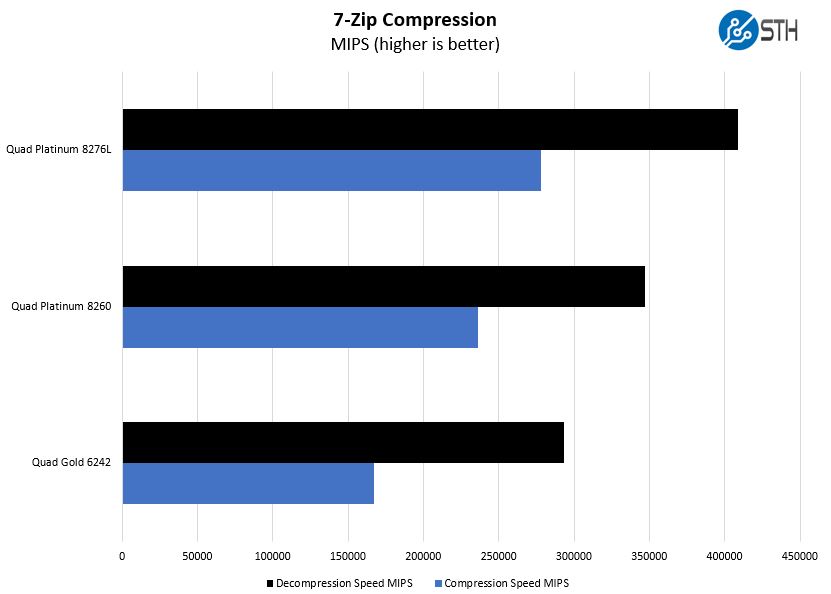
On the compression side, we wanted to pull out our results from this generation. Here we see a solid progression from the quad Intel Xeon Gold 6242 setup to the Intel Xeon Platinum 8260 configuration.
NAMD Performance
NAMD is a molecular modeling benchmark developed by the Theoretical and Computational Biophysics Group in the Beckman Institute for Advanced Science and Technology at the University of Illinois at Urbana-Champaign. More information on the benchmark can be found here. We are going to augment this with GROMACS in the next-generation Linux-Bench in the near future. With GROMACS we have been working hard to support Intel’s Skylake AVX-512 and AVX2 supporting AMD Zen architecture. Here are the comparison results for the legacy data set:
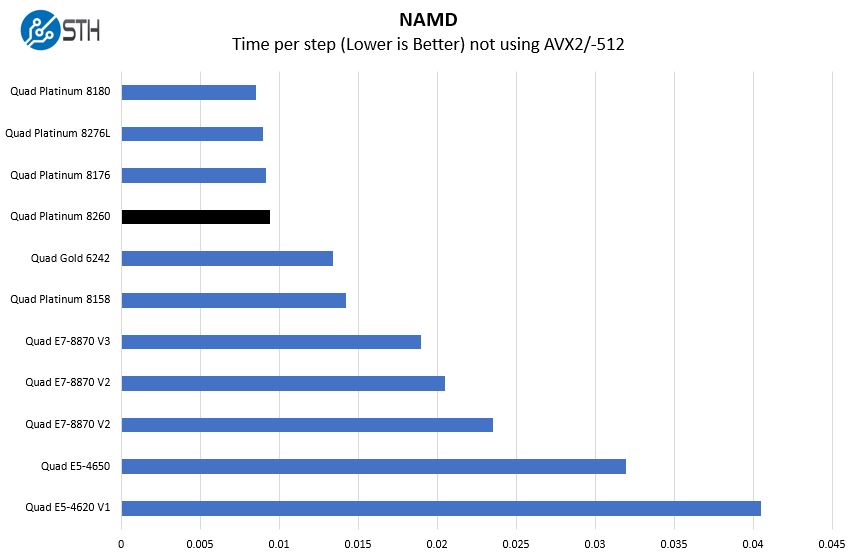
The NAMD results we wanted to show some larger scale. For those using quad socket Intel Xeon E5-4600 series systems, there is a good chance one can get a consolidation ratio of greater than 4:1 by upgrading to the new Intel Xeon Platinum 8260 quad socket configuration.
OpenSSL Performance
OpenSSL is widely used to secure communications between servers. This is an important protocol in many server stacks. We first look at our sign tests:
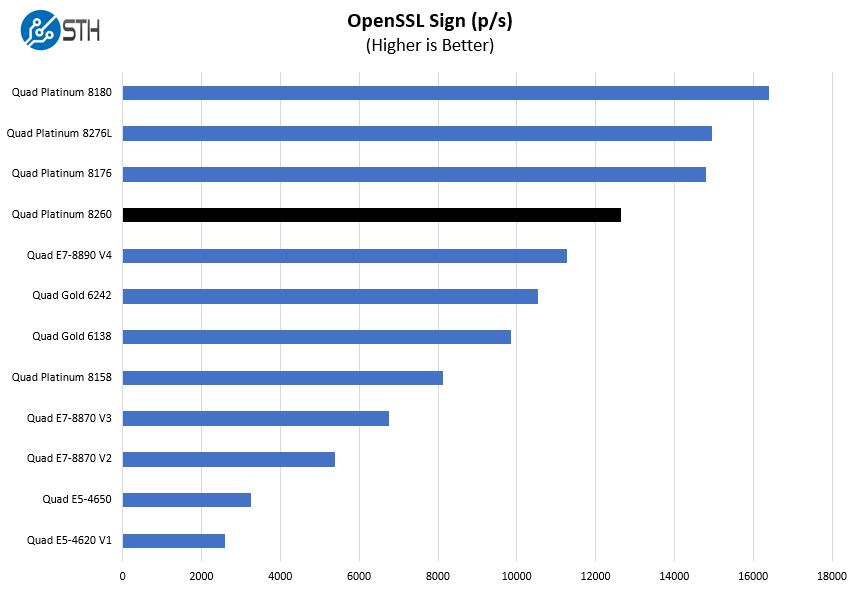
Here are the verify results:
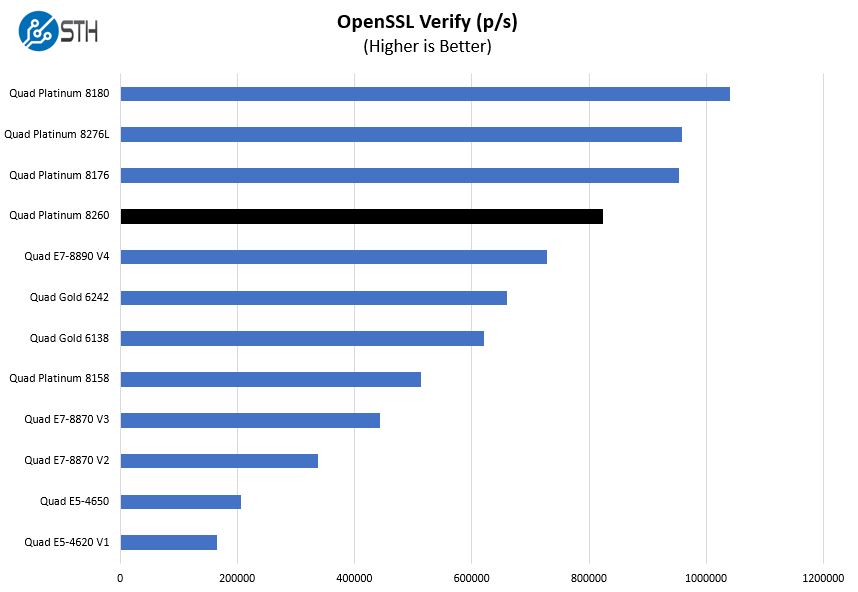
OpenSSL is a foundational technology in enterprise applications. Here we see the performance is again between the quad Intel Xeon Platinum 8176 and the quad Intel Xeon Gold 6242 setup.
UnixBench Dhrystone 2 and Whetstone Benchmarks
Some of the longest-running tests at STH are the venerable UnixBench 5.1.3 Dhrystone 2 and Whetstone results. They are certainly aging, however, we constantly get requests for them, and many angry notes when we leave them out. UnixBench is widely used so we are including it in this data set. Here are the Dhrystone 2 results:
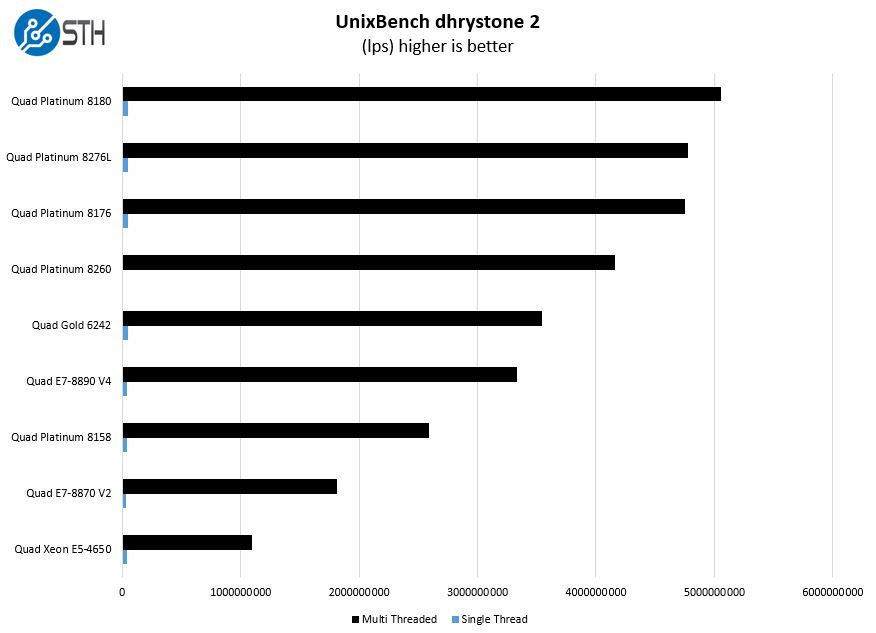
Here are the whetstone results:
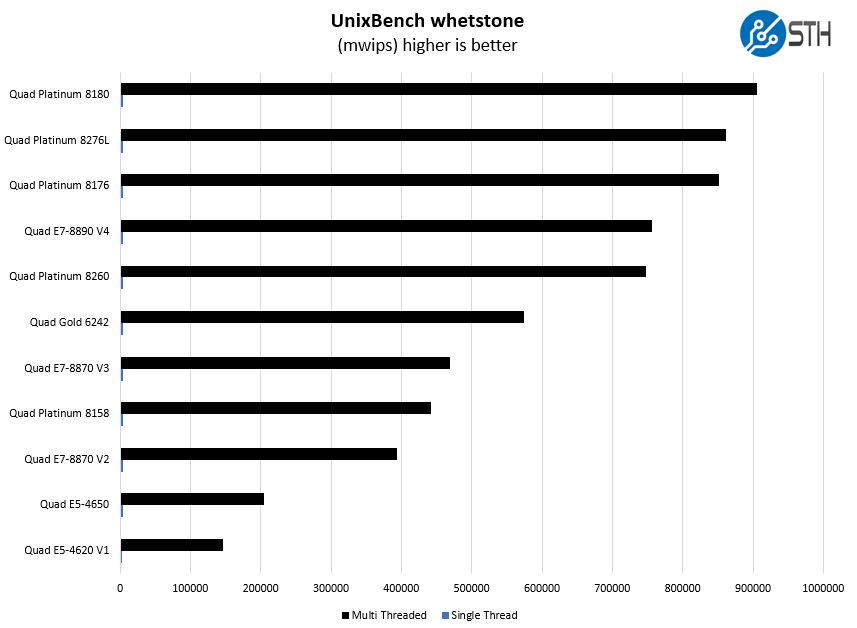
Here we see solid results. These are frankly not the best benchmarks for modern quad socket systems.
GROMACS STH Small AVX2/ AVX-512 Enabled
We have a small GROMACS molecule simulation we previewed in the first AMD EPYC 7601 Linux benchmarks piece. In Linux-Bench2 we are using a “small” test for single and dual socket capable machines. Our medium test is more appropriate for higher-end dual and quad socket machines. Our GROMACS test will use the AVX-512 and AVX2 extensions if available.
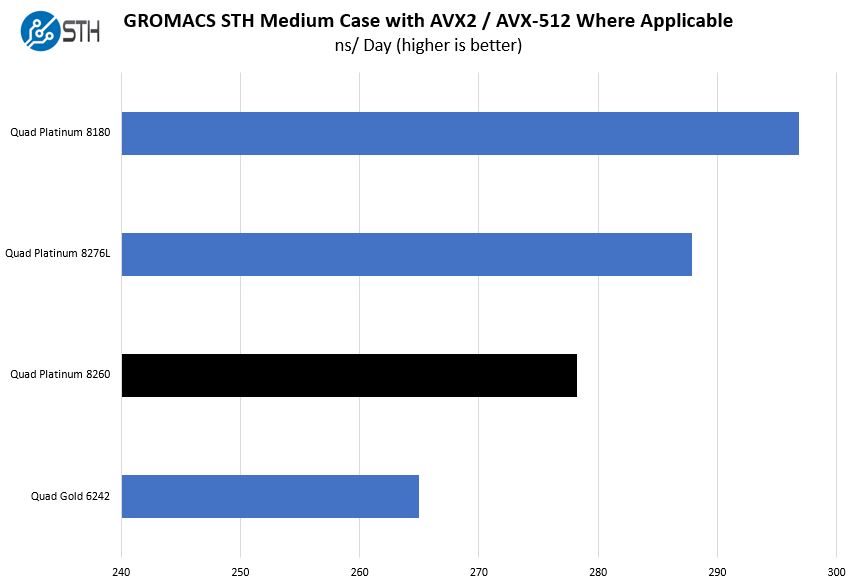
The performance here is excellent. We are getting a nice step function based on cores and TDP throughout the generations.
Chess Benchmarking
Chess is an interesting use case since it has almost unlimited complexity. Over the years, we have received a number of requests to bring back chess benchmarking. We have been profiling systems and are ready to start sharing results:
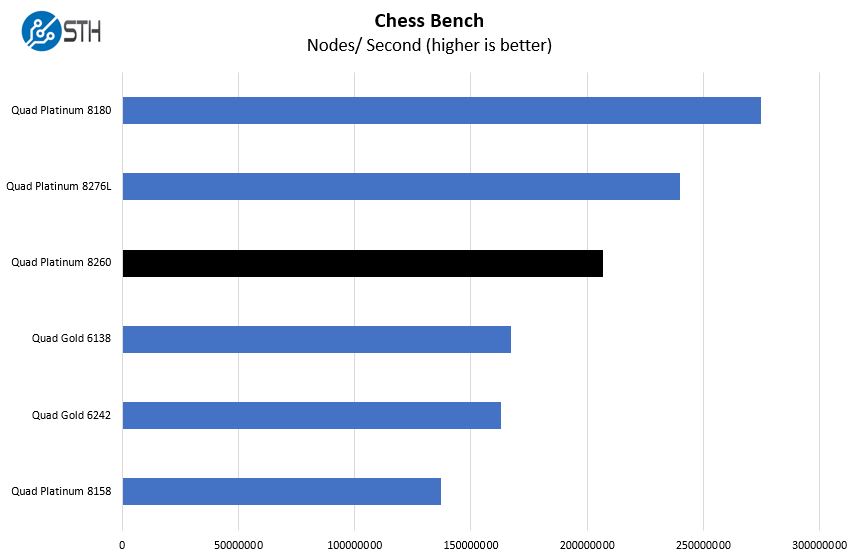
Our chess benchmarking shows the power of the quad Intel Xeon Platinum 8260 setup over the Intel Xeon Gold line. The Platinum 8260 is one of the SKUs that offers more performance than the Gold line. Not all Platinum parts do in quad socket configurations. The Intel Xeon Platinum series is often designed for 4 socket and 8 socket designs.
STH STFB KVM Virtualization Testing
One of the other workloads we wanted to share is from one of our DemoEval customers. We have permission to publish the results, but the application itself being tested is closed source. This is a KVM virtualization based workload where our client is testing how many VMs it can have online at a given time while completing work under the target SLA. Each VM is a self-contained worker.
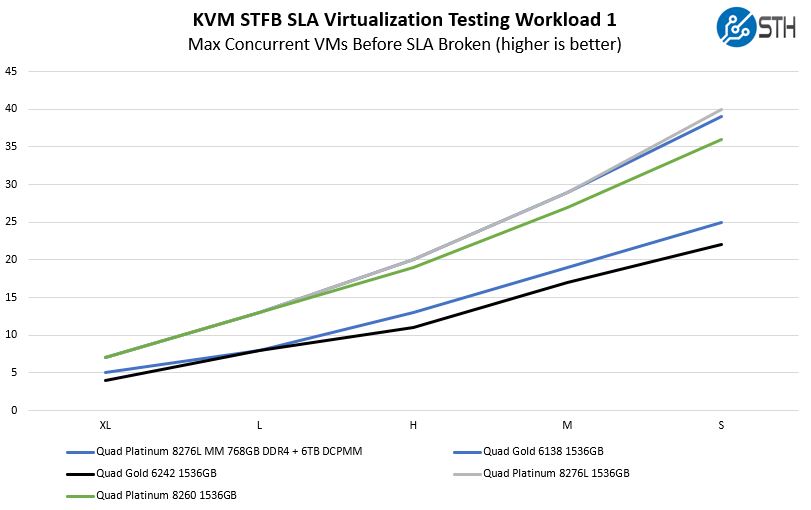
Here we can see performance scale beyond the VM capacity of the quad Intel Xeon Gold 6242 and quad Intel Xeon Gold 6138 platforms. As the workloads get to higher VM counts one can see the 28 cores configurations perform better.
The company also has a CPU-light back-end workload that is mostly dependent on Redis performance and memory capacity with less of a CPU stressor.
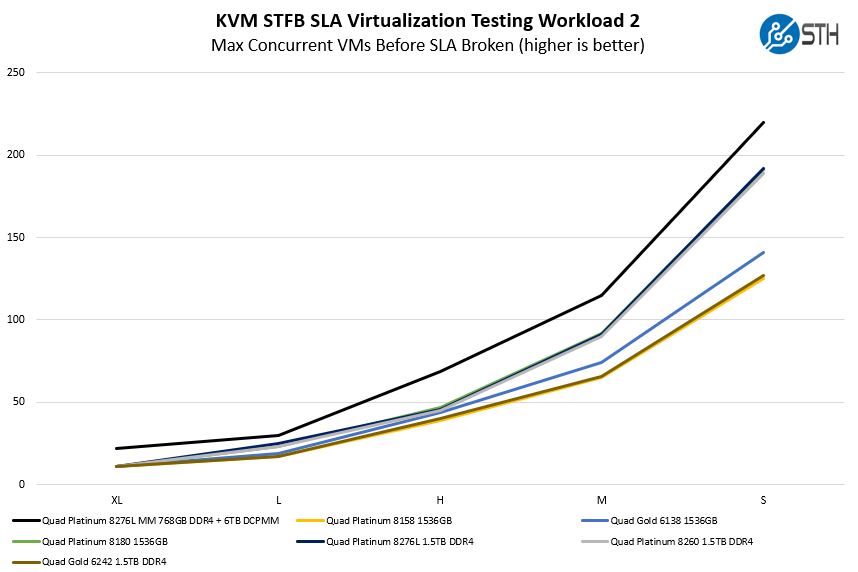
Here one can see the outsized impact that the quad Intel Xeon Platinum 8276L had when paired with 24x 256GB Intel Opatne DCPMMs. Being largely memory-driven, but also somewhat CPU dependent, the quad Intel Xeon Platinum 8260 has a nice balance between core counts and memory capacity.
Next, we are going to discuss the solution’s market positioning and then give our final thoughts.




Intel vs. POWER9 Alternatives paragraph is missing. Agree that Sforza with max 22 cores / 88 threads per CPU, max 2 cpu will probably not be competitive, but LaGrange may very well be.
Also never ending story of Intel speculation failure on security front makes me wonder if you should not consider switching off SMT completely like some even not so security cautious users do (Google/Apple?).
Nice review from the past, would love to see how it does with a review from the present.
A lot a institutes and universities did a lot of work on de MDSattacks RIDL, Fallout and the best name of the all Zombieload. More info on mdsattacks dot com and at the RedHat youtube channel.
Whither the Other Companie? A dual socket EPYC would make it onto the charts I think.